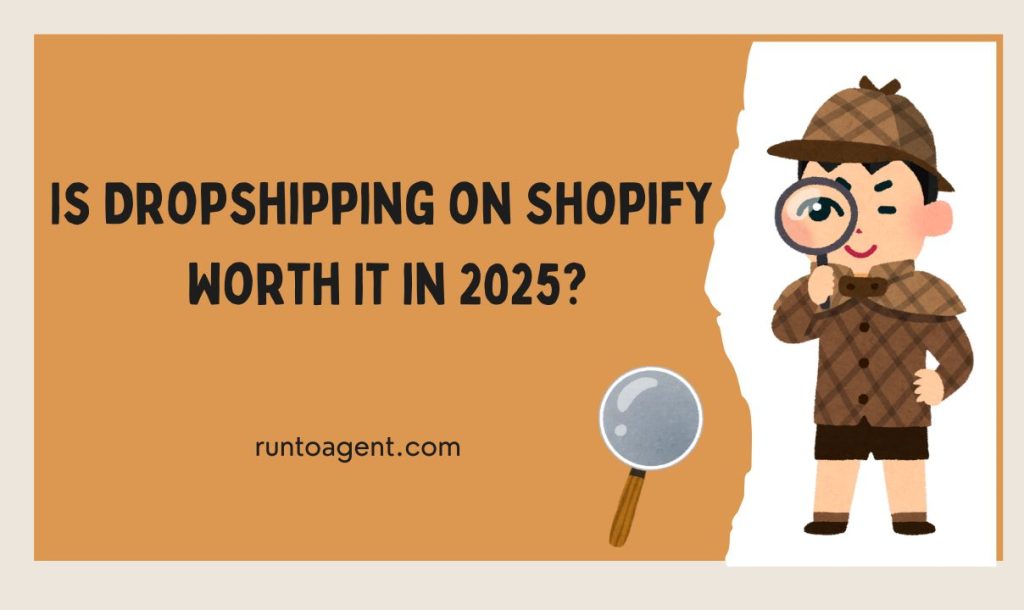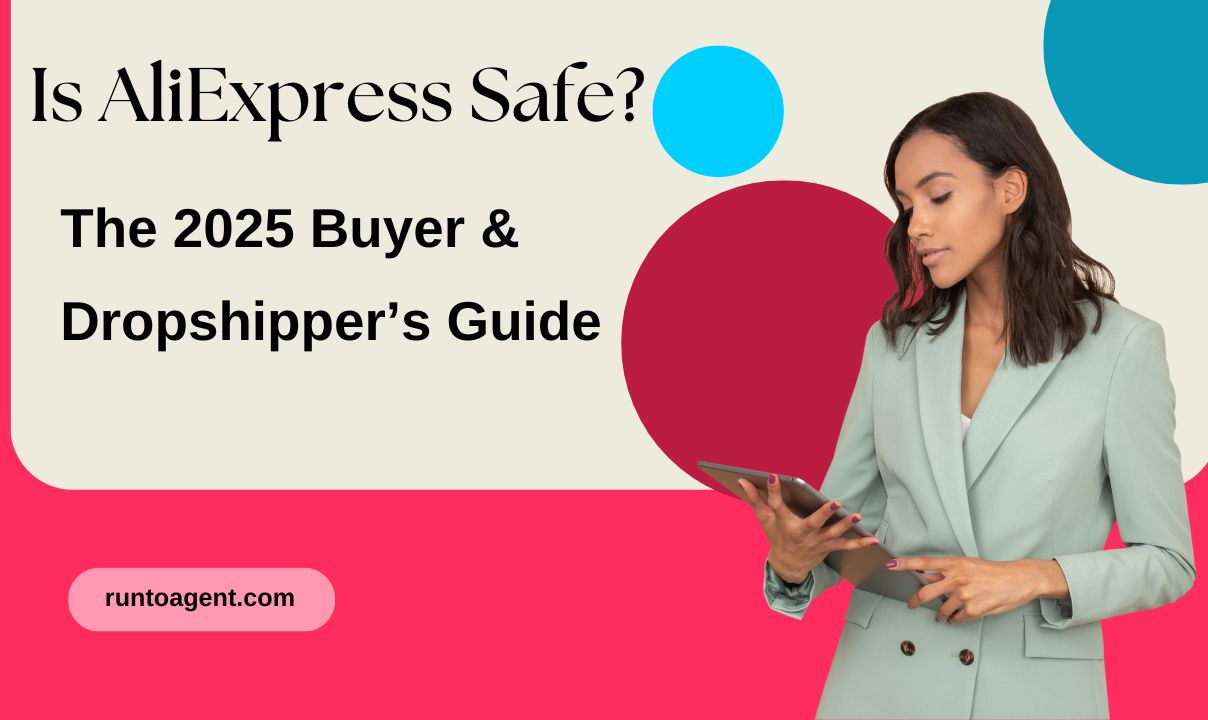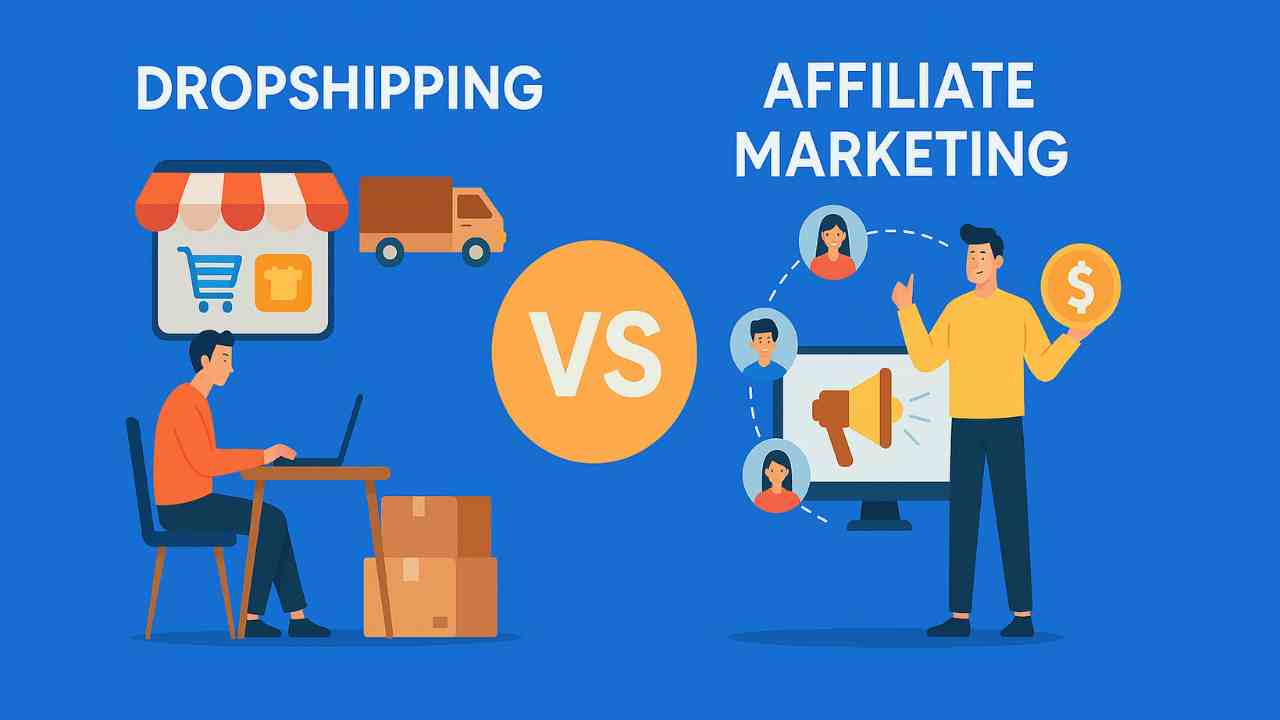Dropshipping on Shopify remains a viable business model in 2025, but profitability depends on strategic execution rather than passive income expectations.
Entrepreneurs worldwide face mounting pressure finding profitable online business models without massive upfront investments. Here’s the reality: Dropshipping on Shopify offers a compelling solution that eliminates traditional retail barriers while leveraging one of the world’s most powerful e-commerce platforms. This comprehensive analysis examines whether Shopify dropshipping remains viable and profitable as we advance through 2025, providing data-driven insights for serious business builders.
1. What Makes Dropshipping on Shopify Different?
But here’s what sets Shopify apart: The platform was architected specifically for e-commerce success, unlike general website builders that treat online selling as an afterthought.
Dropshipping on Shopify benefits from native integrations with major supplier networks that automate complex fulfillment processes. When customers place orders through your Shopify store, sophisticated apps immediately forward purchase details directly toward suppliers who handle packaging and shipping without manual intervention. This seamless automation reduces human error while accelerating order processing times that customers increasingly expect from professional online retailers.
What’s the game-changer here? Shopify’s ecosystem includes over 8,000 specialized apps designed specifically for dropshipping operations. These tools handle everything from inventory synchronization and price monitoring through automated customer communications and advanced analytics reporting. Traditional e-commerce platforms require expensive custom development or clunky workarounds that consume valuable time and resources.
The platform’s scalability accommodates businesses from single-product testing through multi-million dollar operations without requiring technical migrations or infrastructure changes. Whether you’re validating your first product concept or managing thousands of SKUs across multiple international markets, Shopify’s architecture adapts seamlessly without performance degradation or feature limitations.
Ready for the technical advantage? Shopify’s mobile-first design philosophy ensures your dropshipping store performs optimally across all devices without additional optimization work. With mobile commerce representing over 73% of total e-commerce sales globally, according to Statista’s mobile commerce report. this native responsiveness provides immediate competitive advantages over custom-built solutions that often struggle with cross-platform compatibility.
Payment processing integration through Shopify Payments eliminates third-party gateway complications while providing competitive transaction rates and streamlined financial reporting. This unified approach simplifies accounting, reduces processing fees, and accelerates cash flow compared with complex multi-vendor payment solutions required by other platforms.
For a full breakdown of fees, international charges, and risk management, see our dedicated Shopify Payments for dropshippers article.
| Shopify Feature | Dropshipping Benefit | Competitor Comparison |
|---|---|---|
| Native App Ecosystem | 8,000+ specialized tools | Limited dropshipping apps |
| Mobile Optimization | Built-in responsiveness | Requires custom development |
| Payment Integration | Unified processing system | Multiple gateway complexity |
| Scalability | Seamless growth handling | Platform migration required |
2. How Profitable Is Dropshipping on Shopify in 2025?
Let’s examine the numbers because profitability determines whether dropshipping on Shopify justifies your time investment and business aspirations.
Industry data reveals that successful Shopify dropshipping stores typically achieve profit margins between 15-45%, depending on niche selection, operational efficiency, and marketing sophistication. However, these figures represent established businesses that have optimized their operations through systematic testing and refinement processes that most beginners underestimate.
Here’s what the data actually shows: According to recent Oberlo’s dropshipping statistics, only 10-20% of dropshipping ventures achieve consistent profitability within their first year of operations. This statistic reflects the learning curve required for mastering product selection, supplier management, customer acquisition, and operational optimization that successful dropshippers navigate systematically.
The most profitable Shopify dropshipping businesses focus on specialized niches with higher perceived value rather than competing in saturated markets with generic products. Premium niches like health supplements, luxury accessories, and problem-solving gadgets command higher margins while attracting customers willing to pay for perceived quality and exclusive access.
But here’s the encouraging trend: Established dropshippers report average monthly revenues between $1,000-$50,000 after achieving operational stability, with top performers exceeding $100,000 monthly through sophisticated marketing and product portfolio diversification. These success levels require treating dropshipping as a serious business rather than passive income opportunity.
Market saturation concerns haven’t eliminated profitability opportunities because consumer behavior continues evolving, creating new niches and demand patterns that observant entrepreneurs can capitalize on quickly. Social media trends, technological innovations, and demographic shifts constantly generate fresh market opportunities for agile dropshippers who monitor consumer conversations and adapt rapidly.
What’s particularly promising: The global dropshipping market reached $196.78 billion in 2022 and projects growth toward $476.1 billion by 2026, indicating sustained demand for efficient fulfillment models that Shopify facilitates exceptionally well.
Understanding the comprehensive pros and cons of dropshipping helps entrepreneurs make informed decisions about business viability.

3. What Are the Real Costs of Dropshipping on Shopify?
You need to understand this: Hidden costs often destroy dropshipping profitability because beginners focus solely on obvious expenses while overlooking operational necessities.
Shopify’s basic plan starts at $39 monthly, but serious dropshipping operations quickly outgrow basic limitations and require higher-tier plans ranging from $105-$399 monthly. These upgraded plans provide essential features like advanced reporting, additional staff accounts, and reduced transaction fees that become financially beneficial as order volume increases.
Here’s where costs accumulate rapidly: Essential apps typically cost $10-100 monthly each, with successful stores requiring 5-15 specialized tools for inventory management, order automation, customer service, marketing analytics, and competitive intelligence. Popular dropshipping apps like Oberlo, DSers, and Spocket charge based on order volume, making costs scalable but potentially expensive during growth phases. Runtoagent offers a free subscription service
Transaction fees represent significant ongoing expenses that compound with sales volume. Shopify charges 2.9% + 30¢ per transaction on basic plans, decreasing slightly on higher tiers but remaining substantial for high-volume operations. Additional payment gateway fees, currency conversion charges, and international transaction costs further erode profit margins that require careful calculation during pricing strategies.
But wait, there’s more complexity: Marketing costs often exceed platform expenses, with successful dropshippers investing 20-30% of revenue in customer acquisition through Facebook advertising, Google Ads, influencer partnerships, and content marketing. These investments become necessary for sustainable growth but require sophisticated optimization to maintain profitability.
Professional theme costs range from $100-300, while premium functionality additions like advanced analytics, conversion optimization tools, and customer retention apps add substantial monthly expenses. Many beginners attempt launching with minimal budgets, creating unprofessional presentations that reduce conversion rates and customer trust significantly.
The real story about costs: Successful Shopify dropshipping stores typically require $2,000-5,000 monthly operational budgets during growth phases, including platform fees, apps, marketing, customer service tools, and operational reserves for unexpected expenses or seasonal fluctuations.
| Cost Category | Monthly Range | Annual Impact | Scalability Factor |
|---|---|---|---|
| Shopify Plan | $39-$399 | $468-$4,788 | Fixed with volume breaks |
| Essential Apps | $50-$200 | $600-$2,400 | Variable with growth |
| Marketing Budget | $500-$3,000 | $6,000-$36,000 | Scales with ambition |
| Transaction Fees | 2.4-2.9% of sales | Variable | Decreases with volume |
4. How Do You Set Up a Shopify Dropshipping Store?
Here’s your systematic roadmap for launching a professional Shopify dropshipping operation that converts visitors into customers effectively.
Begin with Shopify account creation and plan selection based on your projected order volume and required features. For a complete walkthrough of the entire setup process, follow our detailed guide on how to dropship on Shopify which covers everything from foundation setup to scaling strategies. Choose a memorable domain name that reflects your niche focus while remaining brandable for future expansion opportunities. Avoid overly specific domains that limit growth potential or geographic restrictions that prevent international scaling.
This is where most beginners fail: Theme selection impacts conversion rates more significantly than most entrepreneurs realize. Professional themes optimized for mobile devices, fast loading speeds, and conversion psychology outperform generic alternatives consistently. Invest in premium themes that align with your target market’s aesthetic preferences and psychological triggers rather than attempting customization without design expertise.
Essential app installation should occur before adding products to prevent operational confusion during initial testing phases. For beginners, following a complete dropshipping guide ensures systematic setup without overlooking critical components. Install inventory management tools, order fulfillment automation, customer service platforms, analytics systems, and marketing integrations that streamline operations from day one rather than implementing reactively as problems arise.
What successful dropshippers know: Product organization and categorization require strategic thinking beyond basic sorting. Create logical category structures that guide customers naturally toward purchase decisions while implementing robust search functionality and filtering options that accommodate diverse customer preferences and shopping behaviors.
Payment gateway configuration demands careful attention because checkout complexity directly impacts conversion rates. Enable multiple payment methods including PayPal, Apple Pay, Google Pay, and regional preferences based on target market demographics and cultural payment preferences. Complicated checkout processes abandon up to 70% of potential customers before completion.
Ready for the optimization secrets? Professional product descriptions combined with high-quality images create compelling presentations that justify premium pricing while building customer trust and confidence. Avoid generic supplier descriptions that appear across countless competitor stores, instead crafting unique value propositions that differentiate your offerings meaningfully.
Legal compliance pages including privacy policies, terms of service, refund policies, and shipping information protect your business while building customer confidence. These elements become increasingly important as consumer protection regulations tighten globally and customers demand transparency.
Shopify’s official setup guide provides additional technical details for store configuration and optimization.

5. Which Dropshipping Suppliers Work Best with Shopify?
This decision determines everything: Supplier selection impacts product quality, shipping times, customer satisfaction, and long-term business sustainability more than any other operational factor.
AliExpress remains the most popular choice for beginner dropshippers due to vast product selection and easy Shopify integration through apps like Oberlo and DSers. However, longer shipping times (7-21 days) and occasional quality inconsistencies require careful supplier vetting and customer expectation management that many beginners underestimate.
Here’s what experienced operators understand: Diversification across multiple supplier platforms reduces risk while improving customer satisfaction through varied shipping options and product availability. Platforms like Spocket specialize in US and European suppliers offering faster shipping (2-7 days) at higher product costs that often justify themselves through improved customer retention and reduced refund requests.
Working with professional dropshipping agents provides access to vetted Chinese suppliers with custom packaging options and faster processing times. These partnerships enable competitive advantages through exclusive products, branded packaging, and quality control measures that differentiate your store from generic competitors using standard supplier catalogs.
But here’s the game-changing approach: Runtoagent specializes in connecting Shopify dropshippers with reliable Chinese manufacturers while providing comprehensive quality control, custom packaging, and streamlined communication services. This professional approach eliminates common supplier headaches while enabling premium positioning through superior product presentation and faster fulfillment.
Hybrid fulfillment models combining dropshipping flexibility with regional warehousing offer optimal solutions for scaling operations. These approaches stock popular products locally for faster delivery while maintaining dropshipping for testing new products or serving specialized markets without inventory risks.
What data reveals about supplier performance: Businesses using professional sourcing agents report 67% higher customer satisfaction rates and 34% better profit margins compared with those relying solely on marketplace suppliers. This improvement results from better quality control, faster communication, and customized packaging options that enhance brand perception.
Due diligence remains essential regardless of supplier platform choice. Request product samples, verify business licenses, test communication responsiveness, evaluate shipping timeframes, and assess quality control procedures before committing to partnerships that impact your brand reputation directly.
| Supplier Type | Shipping Speed | Quality Control | Customization Options | Best For |
|---|---|---|---|---|
| AliExpress | 7-21 days | Variable | Limited | Beginners testing |
| Spocket (US/EU) | 2-7 days | Higher | Moderate | Fast shipping focus |
| Professional Agents | 5-12 days | Excellent | Extensive | Serious businesses |
| Hybrid Warehousing | 1-3 days | Premium | Full control | Scaling operations |
6. What Are the Biggest Challenges of Dropshipping on Shopify?
Let’s address the reality: Dropshipping on Shopify involves significant operational challenges that destroy unprepared businesses but provide competitive advantages for those who prepare systematically.
Customer service complexity increases exponentially when suppliers handle fulfillment because you’re responsible for customer satisfaction without controlling product quality or shipping times. Customers expect Amazon-level service regardless of your business model, according to PwC’s customer experience research requiring sophisticated communication strategies and proactive problem resolution that many solo entrepreneurs struggle to maintain consistently.
Here’s where businesses often crumble: Inventory management becomes treacherous when suppliers don’t communicate stock changes promptly. Selling out-of-stock products creates customer frustration, negative reviews, and potential legal complications that damage long-term brand reputation. Successful dropshippers implement multiple backup suppliers and real-time inventory monitoring systems that prevent these scenarios.
Quality control presents ongoing challenges because you’re marketing products without physical verification. Inconsistent quality damages customer trust while creating expensive return and refund situations that erode profit margins rapidly. Professional operators request regular samples and implement customer feedback loops that identify quality issues before they become widespread problems.
But here’s what separates winners from losers: Shipping delays and international complications require transparent communication and realistic expectation setting. Customers who understand delivery timeframes tolerate longer shipping better than those surprised by delays after purchase. Clear shipping policies and regular order updates prevent most satisfaction issues.
Competition intensifies continuously as more entrepreneurs enter dropshipping markets. Generic product approaches become increasingly difficult to differentiate, requiring sophisticated branding, marketing, and customer experience strategies that exceed commodity-level service standards. Successful dropshippers focus on building genuine brands rather than simply reselling products.
The legal complexity reality: International shipping involves customs regulations, duty calculations, restricted product categories, and varying consumer protection laws that create compliance obligations most entrepreneurs underestimate. Professional operators invest in legal consultation and compliance systems that prevent costly regulatory problems.
Learning from successful dropshipping stores reveals common strategies for overcoming operational challenges while maintaining customer satisfaction.

7. How Does Shopify Compare to Other Dropshipping Platforms?
You’re probably wondering how Shopify stacks against alternatives because platform selection impacts every aspect of your business operations and growth potential.
Shopify versus WooCommerce reveals distinct philosophical differences that affect dropshipping success rates significantly. Shopify provides hosted solutions with automatic updates, security management, and technical support that eliminate infrastructure headaches. WooCommerce offers greater customization flexibility but requires technical expertise, hosting management, and security oversight that consume valuable time and resources.
Here’s the breakdown that matters: Shopify’s monthly fees include hosting, security, maintenance, and customer support services that WooCommerce users must arrange separately through multiple vendors. However, WooCommerce’s lower direct costs appeal to technical users who can manage complex hosting and development requirements independently.
App ecosystem advantages favor Shopify dramatically for dropshipping applications. Native integrations with supplier platforms, automated fulfillment tools, and specialized marketing apps provide plug-and-play solutions that would require expensive custom development on other platforms. This ecosystem saves months of development time while providing tested functionality.
This comparison gets interesting: BigCommerce offers similar hosted convenience with competitive pricing but lacks Shopify’s extensive app marketplace and dropshipping-specific integrations. While BigCommerce provides robust built-in features, the dropshipping ecosystem remains significantly smaller than Shopify’s specialized community.
Scalability differences become apparent as businesses grow beyond initial testing phases. Shopify handles traffic spikes and international expansion seamlessly without technical intervention, while self-hosted solutions require infrastructure management and optimization expertise that most entrepreneurs lack. This becomes critical during viral marketing campaigns or seasonal traffic increases.
What the data shows clearly: Migration complexity makes initial platform selection crucial for long-term success. Moving established stores between platforms requires significant technical work and potential SEO impact that affects ongoing profitability. Choosing Shopify initially prevents costly migrations later while providing growth-ready infrastructure from day one.
| Platform | Monthly Cost | Technical Requirements | Dropshipping Apps | Scalability |
|---|---|---|---|---|
| Shopify | $39-$399 | Minimal | 1,000+ specialized | Excellent |
| WooCommerce | $10-$50+ | High | Limited selection | Requires management |
| BigCommerce | $39-$399 | Low | Moderate selection | Good |
| Custom Build | $200+ | Very High | Custom development | Full control |
8. What Marketing Strategies Work for Shopify Dropshipping?
This determines survival: Marketing strategy separates thriving dropshipping businesses from those that struggle generating consistent revenue and sustainable growth.
Facebook and Instagram advertising provides the most scalable customer acquisition channel for Shopify dropshipping stores, offering sophisticated targeting capabilities that reach ideal customers based on demographics, interests, behaviors, and purchasing patterns. Successful campaigns require systematic testing of ad creatives, audience segments, and bidding strategies that optimize cost per acquisition continuously.
Here’s what changes everything: Content marketing through blogs, videos, and social media posts builds long-term organic traffic while establishing brand authority that reduces customer acquisition costs over time. Educational content addressing customer pain points naturally leads toward product recommendations and sales without appearing overly promotional or pushy.
Search engine optimization for Shopify dropshipping requires strategic keyword integration throughout store structure, product descriptions, and content marketing efforts. Organic traffic provides the highest lifetime value because customers finding you through search demonstrate higher purchase intent than those reached through interruption-based advertising methods.
But here’s the secret weapon: Email marketing delivers the highest return on investment for most dropshipping businesses, Many entrepreneurs explore dropshipping as a side hustle before committing full-time resources to business development. with average returns exceeding 4200%. Building subscriber lists through lead magnets, nurturing relationships with valuable content, and promoting products strategically to engaged audiences creates predictable revenue streams that reduce dependence on paid advertising.
Influencer partnerships offer credible product endorsements that traditional advertising cannot match effectively. Micro-influencers (1,000-100,000 followers) often provide better engagement rates and more authentic recommendations than celebrity endorsements while remaining affordable for most budgets. These partnerships work especially well for lifestyle and fashion products.
Ready for advanced tactics? Retargeting campaigns convert interested visitors who left without purchasing, often achieving 2-5x higher conversion rates than cold traffic. Facebook Pixel and Google Analytics enable sophisticated remarketing that brings customers back during optimal decision-making moments with personalized messaging and special offers.
Customer reviews and user-generated content become powerful marketing assets that reduce acquisition costs while building social proof. Encouraging satisfied customers to share experiences through photos, videos, and testimonials creates authentic promotional content that influences purchase decisions more effectively than branded advertisements.
If you’re ready to scale with expert help, our guide to the best Shopify partners for dropshippers shows you exactly which specialists to bring onto your team.

9. How Do You Scale a Dropshipping Business on Shopify?
Here’s where fortunes are made: Scaling dropshipping operations requires systematic automation and strategic delegation that transforms solo ventures into sustainable businesses capable of generating substantial ongoing revenue.
Automation tools eliminate time-intensive manual processes that prevent growth beyond individual capacity limitations. Inventory management systems, order processing automation, customer service chatbots, and marketing campaign automation free entrepreneurs to focus on strategic decisions rather than operational tasks that don’t require human judgment or creativity.
This is the breakthrough moment: Hiring virtual assistants and specialized team members enables 24/7 operations while reducing per-unit operational costs through efficient task delegation. Customer service representatives, content creators, advertising managers, and administrative assistants provide expertise and capacity that accelerate growth while maintaining service quality standards.
International expansion multiplies market size dramatically but requires understanding regional preferences, payment methods, and regulatory requirements that vary significantly between countries. Successful international dropshippers adapt product offerings, marketing messages, and customer service approaches for local markets while maintaining operational efficiency through centralized management systems.
What successful scalers understand: Product portfolio diversification reduces risk while increasing average order values through cross-selling and upselling opportunities. Testing new products systematically while maintaining proven bestsellers creates balanced growth that survives market fluctuations and seasonal variations effectively.
Strategic partnerships with complementary businesses create growth opportunities through shared marketing costs, cross-promotional arrangements, and expanded product offerings. Collaborating with influencers, affiliate marketers, and other e-commerce businesses often produces better results than competing aggressively for the same customers.
Ready for the advanced approach? Professional fulfillment partnerships enable premium service levels while maintaining dropshipping flexibility. Services like custom packaging, quality control, and expedited shipping create competitive advantages that justify higher pricing while improving customer satisfaction and retention rates significantly.
Data analytics sophistication becomes essential for identifying growth opportunities, optimizing marketing spend, and predicting inventory requirements accurately. Advanced tracking systems monitor customer lifetime value, channel attribution, and profit margins at granular levels that enable precise optimization decisions rather than intuitive guesswork.
10. What Legal Considerations Apply to Shopify Dropshipping?
You cannot ignore this: Legal compliance protects your business while building customer trust, but inadequate preparation creates expensive liability risks that can destroy profitable operations overnight.
Business registration requirements vary by jurisdiction but generally include obtaining appropriate business licenses, registering for sales tax collection, and establishing proper business structure that protects personal assets from potential litigation. Many dropshippers operate informally initially but must formalize operations as revenue grows and regulatory attention increases.
Here’s what catches most people off-guard: Sales tax obligations extend beyond your physical location because many jurisdictions require tax collection based on customer location rather than business location. Understanding nexus rules, registration requirements, and ongoing compliance obligations prevents costly penalties and legal complications that interrupt operations.
Consumer protection regulations require transparent policies regarding returns, refunds, shipping timeframes, and product descriptions that match delivered items accurately. Misleading marketing claims or inadequate disclosure create legal liability while damaging customer relationships and brand reputation through negative reviews and potential regulatory action.
This gets complex quickly: International shipping involves customs regulations, restricted product categories, and import/export documentation that requires careful compliance to avoid delays, penalties, or confiscated shipments. Professional operators invest in customs brokers and compliance consulting that prevents expensive mistakes while maintaining smooth operations.
Product liability concerns increase when selling products without direct manufacturing control. Understanding warranty obligations, safety regulations, and potential recall requirements protects against expensive litigation while ensuring customer safety. Insurance coverage becomes essential for protecting against unforeseen liability claims.
What many overlook entirely: Data protection regulations like GDPR and CCPA require specific privacy policies, data handling procedures, and customer rights compliance that affect international operations significantly. Non-compliance creates substantial penalty risks while requiring expensive remediation efforts.
Intellectual property considerations include avoiding trademark infringement, copyright violations, and counterfeit products that create serious legal and financial risks. Vetting supplier product legitimacy and maintaining detailed documentation protects against accusations while ensuring ethical business practices.

11. How Do You Ensure Customer Satisfaction in Shopify Dropshipping?
This determines everything long-term: Customer satisfaction drives repeat purchases, positive reviews, and referral business that reduces acquisition costs while building sustainable revenue streams.
Communication excellence becomes your primary competitive advantage because customers judge your entire business based on interaction quality regardless of supplier performance. Responding promptly to inquiries, providing detailed order updates, and proactively addressing concerns demonstrates professionalism that builds loyalty and trust over time.
Here’s what separates professionals from amateurs: Quality control measures must extend beyond supplier promises through regular sample orders, customer feedback monitoring, and systematic quality audits that identify problems before they become widespread. Maintaining quality standards protects brand reputation while reducing expensive return and refund situations.
Shipping expectation management prevents most customer dissatisfaction through clear communication about delivery timeframes, tracking information, and potential delays during checkout and post-purchase communications. Customers who understand realistic expectations tolerate longer shipping better than those surprised by delays after ordering.
But here’s the customer retention secret: Exceeding expectations through surprise upgrades, personalized packaging, or bonus items creates positive emotional experiences that generate enthusiastic reviews and word-of-mouth marketing. These gestures cost relatively little but produce disproportionate customer loyalty and satisfaction improvements.
Return and refund policies must balance customer satisfaction with business protection through fair but clear guidelines that prevent abuse while encouraging confident purchasing decisions. Streamlined return processes reduce customer frustration while protecting profit margins through efficient handling procedures.
What top performers know: Customer feedback collection through surveys, reviews, and direct communication provides insights for continuous improvement while demonstrating commitment to customer success. Acting on feedback systematically builds reputation for responsiveness while identifying operational improvements that benefit all customers.
Post-purchase engagement through email sequences, educational content, and customer success resources builds relationships beyond single transactions. Customers who receive ongoing value become loyal advocates who refer friends and make repeat purchases at higher profit margins.
Advanced entrepreneurs often explore private label dropshipping to enhance quality control and brand differentiation.
12. What Are the Long-term Prospects for Shopify Dropshipping?
Let’s examine the future because understanding industry trends determines whether dropshipping on Shopify represents a sustainable business opportunity or temporary market inefficiency.
Market evolution favors sophisticated operators who understand customer psychology, leverage advanced analytics, and build genuine brands rather than simple product resellers. Basic dropshipping approaches face increasing competition, but differentiated businesses with superior customer experiences continue thriving through economic cycles and competitive pressures.
Here’s the encouraging trend: Technology developments in artificial intelligence, automation, and supply chain optimization create new opportunities for efficient operators while raising barriers for unsophisticated competitors. Advanced tools for product research, customer segmentation, and operational automation provide competitive advantages for businesses that invest in modern infrastructure.
Consumer behavior shifts toward sustainable products, ethical sourcing, and transparent business practices create opportunities for responsible dropshippers while challenging businesses that prioritize short-term profits over long-term value creation. Companies that align with evolving consumer values position themselves for sustained growth and customer loyalty.
This is particularly promising: Global e-commerce growth continues accelerating, especially in emerging markets where traditional retail infrastructure remains underdeveloped. Dropshipping provides efficient market entry strategies for serving international customers without establishing physical presence or inventory networks that require substantial capital investment.
Regulatory developments may increase compliance requirements but also eliminate unethical competitors who avoid proper business practices. Professional operators who maintain legal compliance and ethical standards benefit from reduced competition while building stronger customer relationships through demonstrated trustworthiness.
What the data suggests clearly: Successful dropshipping businesses increasingly resemble traditional brands with strong customer relationships, quality products, and professional operations rather than simple arbitrage opportunities. This evolution rewards businesses that invest in long-term value creation rather than quick profit extraction.
Platform developments continue improving dropshipping efficiency through better supplier integrations, advanced analytics, and automated marketing tools that reduce operational complexity while increasing profitability potential for businesses that leverage these capabilities effectively.
For those questioning whether dropshipping can create long-term wealth, the answer depends on treating it as a serious business rather than passive income opportunity.
| Trend Factor | Impact on Dropshipping | Opportunity Level | Required Response |
|---|---|---|---|
| Technology Advancement | Increased automation | High | Invest in modern tools |
| Consumer Evolution | Demand for quality | Medium | Focus on differentiation |
| Market Maturation | Higher competition | Medium | Build strong brands |
| Regulatory Changes | Compliance requirements | Low | Maintain legal standards |
Starting a dropshipping business on Shopify in 2025 remains viable for entrepreneurs who approach it strategically rather than seeking quick profits. Success requires understanding the platform’s capabilities, investing in proper setup and automation, maintaining high customer service standards, and building genuine brands that provide value beyond simple product access.
The evidence clearly shows: Dropshipping on Shopify works exceptionally well for businesses that treat it as a serious e-commerce venture rather than passive income opportunity. Platform advantages, supplier integrations, and marketing capabilities provide everything needed for success, but execution quality determines actual results.

Professional operators who invest in quality suppliers like Runtoagent, implement systematic marketing strategies, and focus on customer satisfaction consistently achieve profitable operations that scale sustainably over time. The key lies in building businesses that would succeed regardless of fulfillment method rather than depending solely on dropshipping arbitrage opportunities.
Your success depends on commitment to excellence, continuous learning, and strategic execution rather than hoping for easy profits. Shopify provides the platform and tools, but your effort and intelligence determine whether dropshipping becomes a profitable business or expensive education in entrepreneurship challenges.
FAQ
Q1: How much can you realistically make dropshipping on Shopify? Successful Shopify dropshippers typically earn $1,000-$50,000 monthly after achieving operational stability, with top performers exceeding $100,000 through sophisticated marketing and product diversification. However, only 10-20% achieve consistent profitability in their first year.
Q2: What are the main disadvantages of dropshipping on Shopify? Primary challenges include higher competition, lower profit margins, limited quality control, longer shipping times, customer service complexity, and dependence on supplier reliability. These issues require systematic solutions and professional management.
Q3: Is Shopify the best platform for dropshipping? Shopify offers the most comprehensive dropshipping ecosystem with specialized apps, supplier integrations, and scaling capabilities. While other platforms exist, Shopify’s infrastructure and community support provide significant advantages for serious dropshipping operations.
Q4: How long does it take to become profitable with Shopify dropshipping? Most successful dropshippers achieve initial profitability within 3-6 months but require 12-18 months to build sustainable operations with consistent growth. Timeline depends on niche selection, marketing budget, operational efficiency, and learning curve navigation.
Q5: Do you need special licenses for dropshipping on Shopify? Requirements vary by jurisdiction but typically include business registration, sales tax permits, and appropriate business structure. International operations may require additional licenses and compliance with consumer protection regulations in target markets.
👉 Returns can be tricky in dropshipping—learn how to handle them properly: Dropshipping Returns







